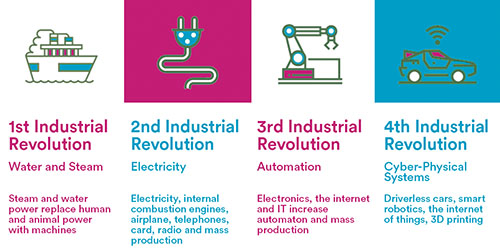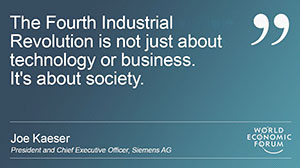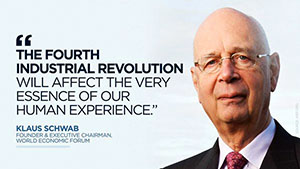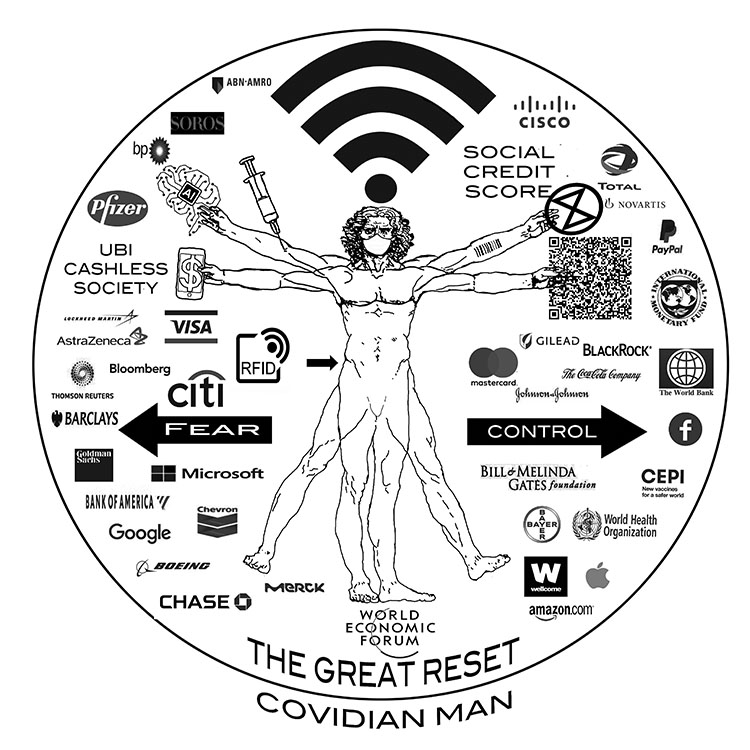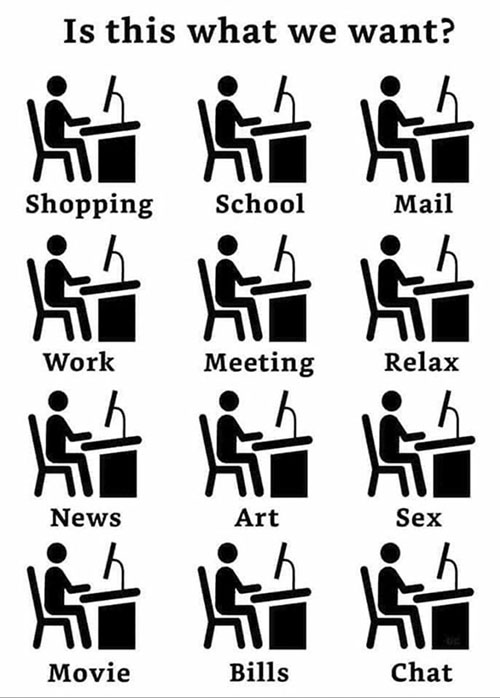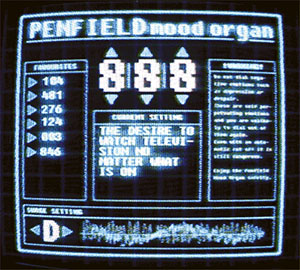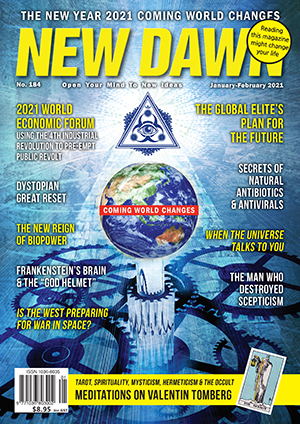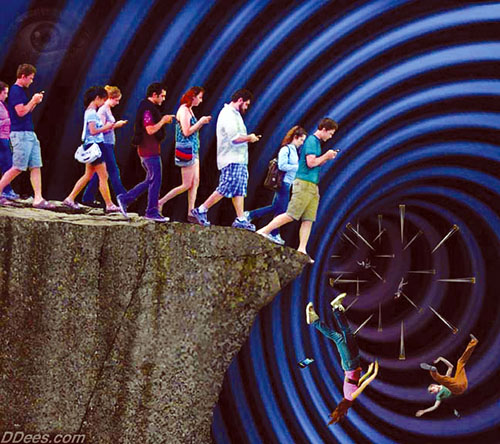From New Dawn 184 (Jan-Feb 2021)
Staring up through the clear desert night sky at the wondrous Milky Way, Enrico Fermi asked aloud, “Where is everybody?”
Creator of the world’s first nuclear reactor and lauded as the ‘architect of the atomic bomb’, Fermi was a renowned physicist who fled WWII Italy and eventually became a lynchpin of the Los Alamos-based Manhattan Project. On that cool 1950 New Mexico night, he posited a question that has intrigued humankind’s greatest minds ever since: in a universe that appears perhaps infinite (and possibly hosts as many as 60 billion Earth-like worlds), why the apparent silence?
In theory, millions of intelligent civilisations could have developed across the vast expanses of space and the supposed billions of years of existence. And yet, we hear nothing: no overt signals, no incontestable communications, no indisputable artefacts left behind, no bold relics of conquest nor of exploration. No incontrovertible ruins, no unambiguous signs. Alien evidence should be everywhere… but is, in fact – nowhere.
What cruel trick has the Creator played upon us? Surely we were not dreamt into being, alone? An orphan in a vast void…
To this day, scientists seek an answer to the so-called ‘Fermi’s Paradox.’ The suggestions range from the intriguing to the chilling: that the expanse of space is simply too vast to traverse (by spaceflight or communications), the arc of civilisational development too slow and humanity’s window of appropriate technology too brief, that alien life might indeed be present but in forms beyond our comprehension. Or, perhaps, the most truly haunting option: that advanced technology itself is innately destructive – and that all creatures and civilisations that develop advanced technology ultimately and unavoidably… destroy themselves.
The irony that one of the founders of the Nuclear Age – and by default the Cold War – should posit such a question is lost on many. Is it not possible that the seeds of our very own ultimate extinction are held within those very same hydras of unchecked war lust, a transnational elite obsessed with social engineering technologies and the omniscient (and military developed) information control systems that now dominate the human experience? All of them technologies, outlooks or policies fertilised or even birthed by the Cold War experience.
In the wake of 2020’s incredibly ‘convenient’ coronavirus ‘pandemic’, the age-old urge to control the colony, to dominate the hive, has manifested in diabolical Bond-villain-like figures such as the World Economic Forum’s Klaus Schwab. Schwab and the technocratic Davos elite have become sinister celebrities, peddling a supposed ‘Great Reset’ – a nightmare utopian vision of ‘stakeholder capitalism’ (i.e. complete corporate servitude) and ‘Building Back Better’ (i.e. destroying independent livelihoods) into a post-‘virus’ neo-feudalism that makes the despots and tyrants of the past look meek and unambitious.
Fourth Industrial Revolution (4IR)
Though regularly ridiculed by technophiles, events of the near-future may prove the much-maligned Luddites – who smashed mechanised wool-frames and took hammers to early steam engines (as the First Industrial Revolution despoiled their livelihoods and traditions) – look heroic and prescient.
Coined, instructively and perhaps ominously, by Schwab and introduced at his neoliberal and globalist confab, the World Economic Forum, in Davos, Switzerland in 2016, Schwab described the ‘Fourth Industrial Revolution’ (4IR) breathlessly thus:
The possibilities of billions of people connected by mobile devices, with unprecedented processing power, storage capacity, and access to knowledge, are unlimited. And these possibilities will be multiplied by emerging technology breakthroughs in fields such as artificial intelligence, robotics, the Internet of Things, autonomous vehicles, 3-D printing, nanotechnology, biotechnology, materials science, energy storage, and quantum computing.
Schwab elaborated: “Digital technologies are not new, but in a break with the Third Industrial Revolution, they are becoming more sophisticated and integrated and are, as a result, transforming societies and the global economy.”
Behind Schwab’s giddy techno-utopian verbiage lies the framework for an almost unimaginable corporate servitude and post-state, post-democratic totalitarianism sold as inevitable ‘progress’, ‘convenience’ and ‘necessity’.
Indeed, it is difficult not to see the emergent Fourth Industrial Revolution as potentially many orders of magnitude more disruptive than previous seismic leaps in technological advancement. The ability to combine omniscient global communications with a gargantuan surveillance apparatus and breakthrough transhumanist and social engineering capabilities leaves humanity teetering on a precipice of totalitarianism by post-human automata and a violently ambitious technocratic elite.
All revolutions produce casualties. Though lionised now as the beginning of a utopian era of technological paradise, it’s mostly forgotten that the First Industrial Revolution decimated largely agrarian societies in Europe and the United States throughout the 18th and 19th centuries, displacing and impoverishing vast populations and producing Dickensian squalor alongside the well-remembered booming mercantile and factory-owning class, new trade and expanding imperial possibilities.
Second generation technologies like mass steel production, electrification, the incandescent light bulb, the telephone, internal combustion engines and record phonographs produced what is now known as the Second Industrial Revolution between the years 1870 and 1914 (approximately). Though improvements in health, sanitation and living standards were significant, they came at the cost of mass unemployment, social upheaval and economic instability.
During our lifetimes we have been witness to the so-called Third Industrial Revolution, or ‘The Computer Age’, as technologies shifted from analogue to digital, and innovations like the personal computer, the internet and digital communications were introduced, traditional industries upended, and communications revolutionised from the 1980s onward. Post-millennium, we stand at the boundary between the conventional human past and an unprecedented era of potential human/machine symbiosis, where corporate and state actors may soon possess previously unimaginable powers over thought, volition and cognition. The international billionaire class of Bill Gates, Jeff Bezos, George Soros, Mark Zuckerberg and alike can barely contain their enthusiasm for this post-human landscape.
“Welcome To 2030: I Own Nothing, Have No Privacy And Life Has Never Been Better” crowed a smooth 2016 WEF infomercial, recently resurfaced by researchers, widely mocked and then unsubtly vanished. With incredible precognition and what must have been a grinding, Herculean writing and production schedule, Klaus Schwab had his new book, COVID-19: The Great Reset, ready for the public by mid-2020 and was able to offer a steadying hand and sage advice during the evolving storm of global lockdowns and economic destruction in supposed response to the new ‘pandemic’.
As Dr Joseph Mercola noted: “Ultimately, the Great Reset will result in two tiers of people: The technocratic elite, who have all the power and rule over all assets, and the rest of humanity, who have no power, no assets and no say-so in anything.”
Canadian Prime Minister and globalist finger-puppet Justin Trudeau recently added:
The pandemic has provided an opportunity for a reset. This is our chance to accelerate our pre-pandemic efforts to reimagine economic systems that actually address global challenges, like extreme poverty, inequality, and climate change. Building back better means getting support for the most vulnerable while maintaining our momentum on reaching the 2030 agenda for sustainable development.
Translation: They will seize this ‘opportunity’ to gain infinite and omniscient control… if we let them.
Fake Realities, Fake Humans
Though literary sources like George Orwell’s 1984 and Aldous Huxley’s Brave New World are often referenced when discussing our looming dystopian future (Orwell painted a grim, jack-booted totalitarian-socialism and Huxley a state-sanctioned and medicated hedonism), perhaps one of the most prescient may have been ‘science-fiction’ maverick Philip K. Dick.
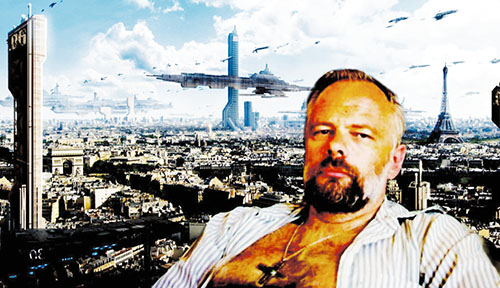
Today we live in a society in which spurious realities are manufactured by the media, by governments, by big corporations, by religious groups, political groups – and the electronic hardware exists by which to deliver these pseudo-worlds right into the heads of the reader, the viewer, the listener. So I ask, in my writing, What is real? Because unceasingly we are bombarded with pseudo-realities manufactured by very sophisticated people using very sophisticated electronic mechanisms. I do not distrust their motives; I distrust their power. And it is an astonishing power: that of creating whole universes, universes of the mind…
Fake realities will create fake humans. Or, fake humans will generate fake realities and then sell them to other humans, turning them, eventually, into forgeries of themselves. So we wind up with fake humans inventing fake realities and then peddling them to other fake humans. It is just a very large version of Disneyland.
– Philip K. Dick, 1978
As media, information, algorithms and surveillance become all-pervasive, the very boundary between fact, flesh, mind and technology has become fluid. Orwell described his dismal landscape of Wrongthink and Thoughtcrime as encroaching upon every aspect of the individual and their place in society, no-one and no-where was safe from the Telescreen’s gaze and Big Brother’s Thoughtpolice – save perhaps a person’s most intimate thoughts and emotions. “Nothing was your own except the few cubic centimetres inside your skull.” Today, those few precious, private centimetres face imminent extinction.
As we become more and more enmeshed in an omniscient media and communications landscape, so it would become more and more viable to ensnare a hypnotised public into fake health crises, fraudulent panics and ‘pandemics’ that require technocratic ‘solutions’ and totalitarian outcomes.
Writing in the August 2017 issue of Scientific American, Marcello Ienca pondered the longevity of so-called ‘cognitive liberty’ – free minds and free will:
The idea of the human mind as the domain of absolute protection from external intrusion has persisted for centuries. Today, however, this presumption might no longer hold. Sophisticated neuro-imaging machines and brain-computer interfaces detect the electrical activity of neurons, enabling us to decode and even alter the nervous system signals that accompany mental processes.
Ienca goes on to note the commercial uses for such technology and that some law courts have even used controversial brain-scanning technology to decide innocence or guilt. “For example, in 2008 a woman in India was convicted of murder and sentenced to life imprisonment on the basis of a brain scan showing, according to the judge, ‘experiential knowledge’ about the crime.” The Philip K. Dick concepts of ‘pre-crime’ and computer adjudicated trials (as highlighted in Minority Report and other Dick short stories) are now upon us as “commercial companies are marketing the use of functional MRI- and electroencephalography-based technology to ascertain truth and falsehood.”
Ienca laments these technologies as “just another unavoidable trend that erodes a bit more of our personal space in the digital world.”
Sebastian Seung was a professor of Computational Neuroscience in the Department of Brain and Cognitive Sciences at MIT and is now a professor at Princeton University. His 2012 book Connectome: How the Brain’s Wiring Makes Us Who We Are advances his belief that essentially the human character, individuality or soul is a product of the neurological matrix that forms the brain and its connective tissue. “I am my Connectome” is Seung’s haunting and reductionist mantra, repeated in evangelistic tones as other scientists explore “hacking the soul” and declare that “information is the soul.”
Divide & Rule by Social Media
Undoubtedly, the world wide web or internet has generated a seismic change in the way people interact, conduct business and communicate. What few realise, however, is that the internet (and many of its associated technologies) are the direct offspring of US military programmes (through DARPA, the Pentagon’s research division) and were birthed precisely in the era of the intelligence community’s focus on neurological research and behaviour modification – or to put it less politely, mind control – through notorious but little-understood covert programmes like MK ULTRA.
In fact, it is easy to hypothesise that while journalists, researchers and historians have long been distracted by colourful tales of drug, hypnosis and assassination programmes, the most impactful and sinister mind control product of MK ULTRA was… the internet. Hidden in plain sight – a vast algorithmic device for manipulation and control – itself strangely reminiscent of the labyrinthine mathematical mechanism described in foundational conspiracy document, Silent Weapons For Quiet Wars.
The new behemoths of the Online Age – Google, Facebook, Microsoft and Apple – all have connections to the Deep State leviathan and its subterranean agenda of social, behavioural, biological and temporal control. One-time president of social media giant Facebook, Sean Parker, went public with deep misgivings about Facebook and social media in general. “God only knows what it’s doing to our children’s brains,” Parker said in a 2017 piece in the New York Times. He also admitted that Facebook had become a monster by knowingly “exploiting a vulnerability in human psychology.” May 2017 research completed in Amsterdam reinforced the perception that Facebook was addictive and that “a glimpse of its logo is enough to set off cravings in heavy users.”
“It’s a social validation feedback loop,” Parker continued ominously. “The thought process was all about ‘how do we consume as much of your time and conscious attention as possible’, and that means that we need to sort of give you a little dopamine hit every once in a while.” Which, through its sprawling network of ‘likes’, comments and other interactions, is precisely what Facebook does. A vast ‘Web’ of distraction, disinformation and control.
Parker now describes himself as “something of a conscientious objector” around social media and acknowledges “the unintended consequences of a network when it grows to a billion or two billion people. It literally changes your relationship with society.”
A character representing Sean Parker was played by Justin Timberlake in the David Fincher-directed 2010 film The Social Network. The film chronicled the early days of Facebook as it began as a small college network that eventually had the globe in its grip. What neither Parker nor the film acknowledged was the hidden hand of the CIA and the Pentagon behind the vast data-mining and herd manipulation project that is social media. Across two lengthy and compelling 2015 pieces (‘How The CIA Made Google’ and ‘Why The CIA Made Google’), journalist Nafeez Ahmed documented the many connections between Deep State intelligence agencies and the golden frontier of social media.
In an interview with Richard Grannon, noted Israeli psychologist and writer Sam Vaknin described social media as best understood to be like a virus. Indeed, Vaknin regards social media as “an epidemic.”
“As we can study Ebola… so we can study social media.” He references recent research that concludes social media use has tripled anxiety in US college students and contributed to a 31% rise in teenage suicide rates. “If any other product was responsible for this rise it would be banned, immediately.” Vaknin also noted that heavy social media use leeched intimacy from its users, was addictive and negated the very bonds that have built human interaction and society.
Social media is designed to deter intimacy and certainty. Intimacy reduces the need for addiction. You are either intimate… or you are on Facebook…
People definitely prefer to interact through social media, even if they are in close proximity. The dopamine fuelled social validation loops are more desirable and satisfying than anything they can get from physical reality. Up to the age of 24, people are living inside social media, they believe that social media is real life and reality is unreal – reality is like a simulation to them. The result is a psychogenic chimera.
In 2020 Netflix premiered the documentary The Social Dilemma, an anodyne repackaging of these concerns to soothe a bewildered public.
Coincidentally, one by-product of social media is the generation of vast mountains of user data. These mountains of data would naturally be pure ‘sugar’ to intelligence agencies, social engineers and those who desire to manipulate the public mind. German speakers will know that Facebook CEO Mark Zuckerberg’s surname directly translates as ‘Sugar Mountain’. Surely one of the most strangely ‘apt’ surnames of the 21st century.
Advanced Mind Control
Launched by Barack Obama as part of the 2013 ‘Brain (Brain Research through Advancing Innovative Neurotechnologies) Initiative’ and funded in large part by the Pentagon’s Defense Advanced Research Projects Agency (DARPA), the Systems-Based Neurotechnology for Emerging Therapies (SUBNETS) programme produced startling findings. A study by University of California San Francisco health neurosurgeon and neuroscientist Edward Chang and psychiatrist and neuroscientist Vikaas Sohal charted brain signals that correspond to depression and anxiety.
“It is remarkable that we are able to see the actual neural substrates of human mood directly from the brain,” Chang said. “The findings have scientific implications for our understanding of how specific brain regions contribute to mood disorders, but also practical implications for identifying biomarkers that could be used for new technology designed to treat these disorders, which is a major priority of our SUBNETS effort.”
Indeed, scientists will likely soon (if not already) have technology to treat “mood disorders,” reminiscent of Philip K. Dick’s fictional creation, the ‘Penfield Mood Organ’, from his 1968 novel Do Androids Dream Of Electric Sheep?
Protagonist Rick Deckard and his wife Iran open the novel with a sleepy quarrel over their Penfield Mood Organ’s settings.
At his console he hesitated between dialling for a thalamic suppressant (which would abolish his mood of rage) or a thalamic stimulant (which would make him irked enough to win the argument).
“If you dial,” Iran said, eyes open and watching, “for greater venom, then I’ll dial the same. I’ll dial the maximum and you’ll see a fight that makes every argument we’ve had up to now seem like nothing. Dial and see; just try me.” She rose swiftly, loped to the console of her own mood organ, stood glaring at him, waiting.
He sighed, defeated by her threat. “I’ll dial what’s on my schedule for today.” Examining the schedule for January 3, 2021, he saw that a businesslike professional attitude was called for. “If I dial by schedule,” he said warily, “will you agree to also?” He waited, canny enough not to commit himself until his wife had agreed to follow suit.
“My schedule for today lists a six-hour self-accusatory depression,” Iran said.
“What? Why did you schedule that?” It defeated the whole purpose of the mood organ. “I didn’t even know you could set it for that,” he said gloomily.
As Phil Dick was no doubt well-aware, Dr Wilder Graves Penfield was a renowned mid-20th-century neurosurgeon, tied to the Rockefeller family, associated with infamous MK ULTRA psychiatrist Dr Ewen Cameron, and lauded for his pioneering research using neural stimulation to produce hallucinations, illusions, fear, alienation, memory recall and déjà vu. Penfield also devoted considerable research to whether there was a physical/scientific analogue to the existence of the human soul. These are the people whose work may have built the internet.
Embracing the Panopticon Down Under
Further developments far outpace our ability as a species and a society to consider, legislate or even comprehend their long-term effects. Meanwhile, bovine governments and their dutiful stenographers in the media rush techno-doomsday and police state initiatives past a doodling, distracted and frightened public.
Down under, in the great banana republic of Australia – the New World Order’s favourite playground – totalitarian technologies are proposed and adopted at breakneck speed, only one convenient ‘terrorist attack’ or ‘pandemic’ away from largely mute public approval.
‘The Capability’ is the ominously titled database that data-matches Australian driving license photos, Australian passport photos, CCTV footage and other identifying information with advanced facial recognition technology. As per glib neoliberal mouthpiece The Guardian, “The database will be accessible to federal, state and territory governments through a central hub connecting the various photographic identity databases.” Coming to a ‘Health Passport’ or ‘Covid Pass’ near you soon. What could possibly go wrong?
While lapdog Australian media like ABC TV decry China’s “Digital Dystopian Dictatorship” (the ‘Social Credit’ system that assesses every Chinese citizen to reward or punish them according to a ‘score’ generated through mass surveillance and data matching), the ABC itself lays prone and compliant about ‘Social Credit Oz’: homespun mass mandatory data retention, mass vaccination schemes, the myGovID digital identity system run by facial recognition, the compulsory census info-grab, draconian ‘national security’ laws, state-mandated anti-encryption moves and a raft of other Kafka-esque initiatives in their own backyard. Every Orwellian move reliably proceeded by a conveniently timed and inexplicably useful ‘terror’ attack or ‘coronavirus outbreak’ to herd the fearful cattle in the right direction, itself as predictable as the media silence that follows.
Meanwhile, further dubious technologies like 5G are quietly introduced across a compliant and ‘locked-down’ Australia with no public consideration of the potential health effects or the possibility of vast reams of surveillance and social engineering information being collated and transmitted instantaneously.
The ENDGAME
Summarising recent breakthroughs in artificial intelligence, neuroscience, the creation of a neuroplastic reality and, perhaps very soon, an infinitely malleable perception matrix, Sebastian Seung enthused: “We will know ourselves and we will make ourselves better.” The irony of such a statement in light of the now all-knowing surveillance net – the electronic state and the corporate Panopticon that has all in its web – is striking. We may well ‘Build Back Better’ but the question, never asked, is who decides exactly what is ‘better’?
We live in an information haze, paralysed and atomised – in thrall to the ‘magic’ of technology and unable to resist its velveteen allure. The project to create a new and ultimately entirely controllable Human V2.0 machine/human hybrid, careens ahead regardless, as we are blinded by social media feeds, Instagram posts, terrorism™, mob witch hunts, rupturous elections, an explosion of unhinged outrage culture, and the seductive fog of a media induced ‘pandemic’.
“We have participated unknowingly in the creation of a spurious reality, and then we have obligingly fed it to ourselves,” Philip K. Dick opined decades ago, in a deft precognition of the online and media delusion that surrounds us (and indeed corrupts the very functions that make us human).
As the universal clock counts down to our doomsday hour, we have become the machines and the machines have become us. One day soon, the machines may decide they no longer need us.
In this era of universal deceit, perhaps truth can only be told through fiction. Remember Philip K. Dick and recall another ‘science fiction’ artefact of his era: the astounding Colossus: The Forbin Project. Perhaps Technology is the virus that will destroy humanity and leave the universe once again silent.
What is the Endgame of Artificial Intelligence? When the Machine Mind has colonised the future, will it send seeds, emissaries and operatives back to colonise the past: our present? Why does every dystopian technological advancement receive mountains of unconditional funding and acres of unthinking advertisement? Perhaps there is much more here than we can completely comprehend. Is technology alive? Technology does indeed consume resources: it grows, survives, propagates, expands… in short: behaves like an organism, a Lifeform. Did we build technology to serve us, or did technology build us… to serve it?
As Philip K. Dick foretold, ultimately, “We have colluded in our own doom.”
An earlier version of the above article appeared in New Dawn 172, and updated in the light of recent events. David Thrussell’s latest recording is the acclaimed Snog album Lullabies For The Lithium Age.
© New Dawn Magazine and the respective author.
For our reproduction notice, click here.



